“It didn’t tick his boxes. It didn’t give him what he wanted”: Before Fender, Jeff Beck worked with Ibanez to create a wild Telecaster/Les Paul hybrid – this is the never-before-told story of the signature model that almost was
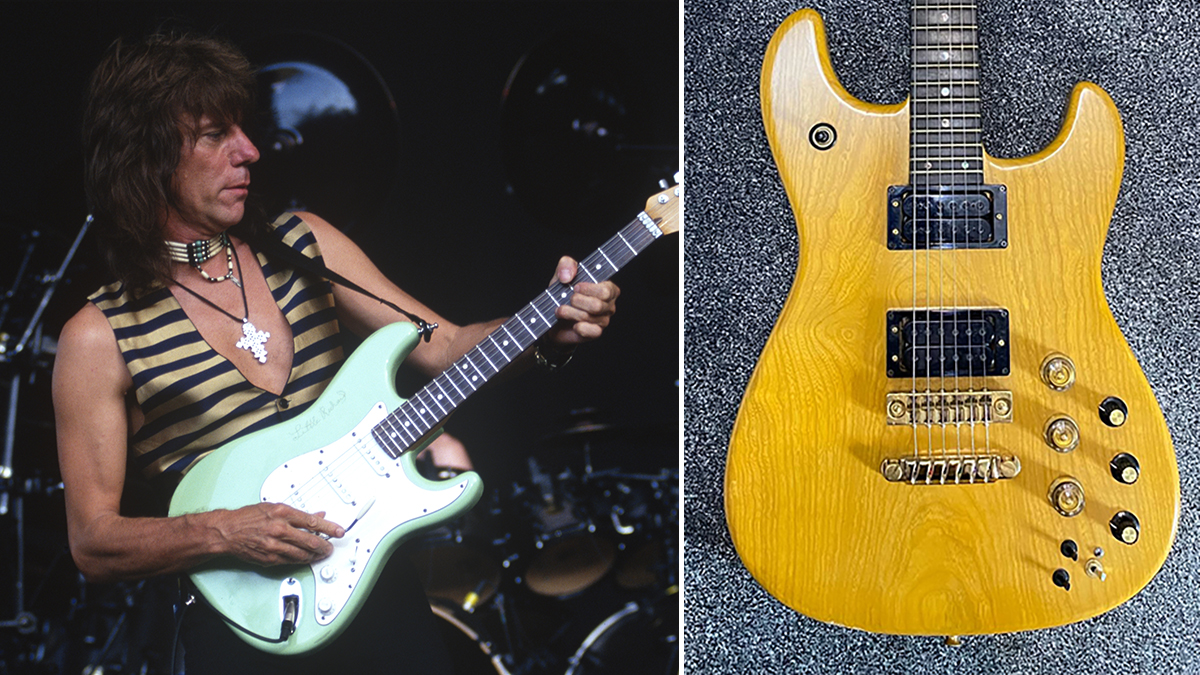
Guitar folklore is filled with hypothetical “what ifs?” – the kinds of stories that give fans creative license to dream up wild alternate realities in which the face of the guitar world as we know it today would be completely unrecognizable.
Imagine, for instance that Jeff Beck partnered with Ibanez for a signature guitar. Madness, right? Except, unknown to many guitar fans, this particular “what if?” came close to actually happening.
In the 1980s, Jeff Beck – a master of many electric guitars, including the Fender Stratocaster and Gibson Les Paul – had reached a crossroads as a guitar player. Though fond of both models, he longed for something that would bring the best bits of both instruments into one unique creation.
What Beck envisaged was a signature guitar like no other – and he turned to Ibanez to help his vision become a reality.
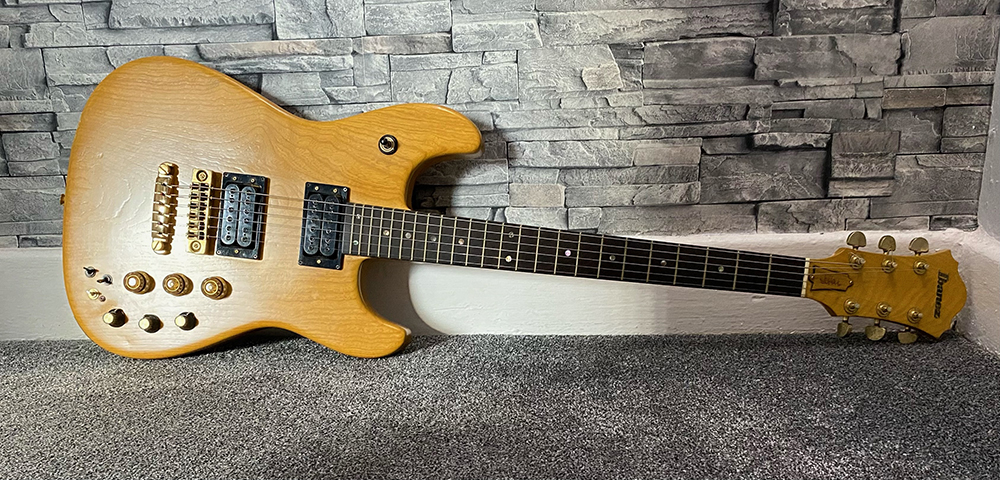
The result was a never-released prototype signature designed in collaboration with the Japanese brand – a model so rare, so unimaginable, that few would even know it had been conceived, let alone actually built.
But it was ultimately assembled, and now one of only a handful of early prototypes ever created has been unearthed by a guitar collector named Nathan Hodgson.
With the double-cut body of a Strat and the dual-humbucker configuration of a Les Paul, the guitar is absolutely drowning in onboard controls – an intriguing aspect of an even more intriguing instrument that seemingly goes against Beck's famed less-is-more approach.
Get The Pick Newsletter
All the latest guitar news, interviews, lessons, reviews, deals and more, direct to your inbox!
Here, through the perspectives of those who worked to bring Beck’s ideas to life, we trace the history of this lost instrument, the influences behind its creation, and why, ultimately, it was lost to history as the signature guitar that never was.
“A slightly more elegant Strat”: the birth of Beck’s idea
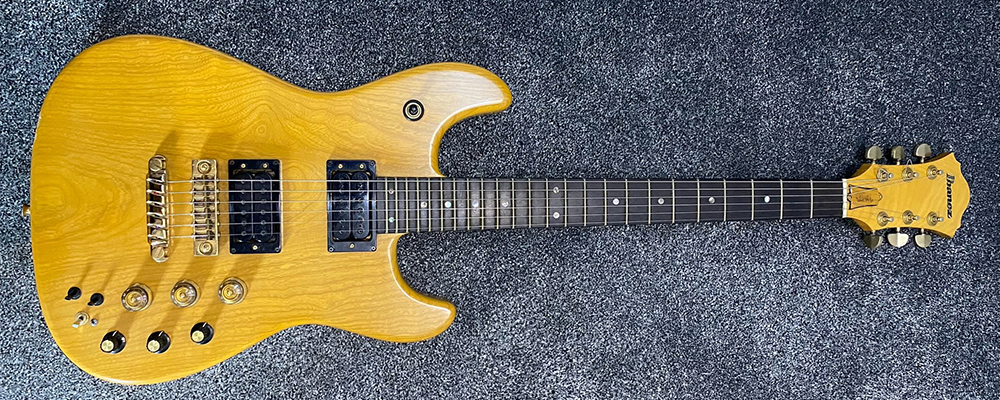
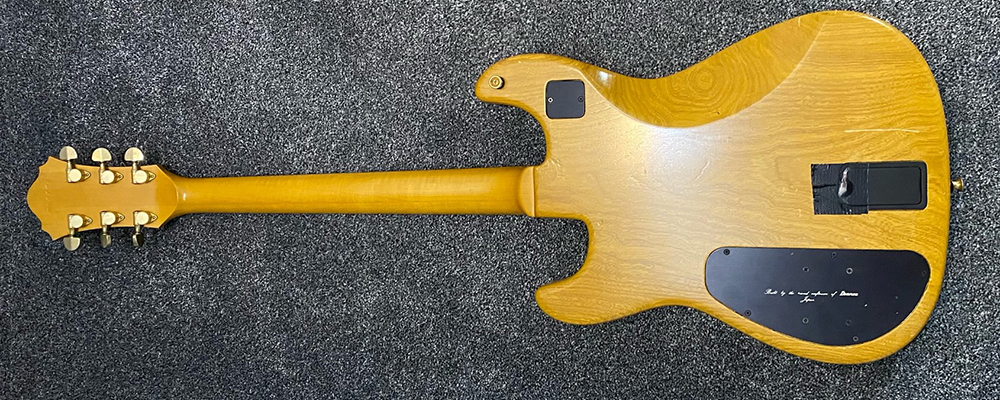
Around 1980, Jeff Beck began to feel a strong sense of disillusionment with the guitars he had been playing up to that point in his career. At least, that’s the impression he gave Ibanez Marketing Director Jeff Hasselberger, who was asked to visit Beck at his home in England to discuss the possibility of a brand-new guitar model.
Hasselberger – whose responsibilities also included advertising, catalogs, trade shows, R&D and artist relations – spent some time with Beck, at first admiring his “legendary” cars and garage, and later brainstorming ideas for a new six-string.
“Jeff spent more time telling me what he didn’t like about the guitars he was playing than what he was looking for,” recalls Hasselberger, who first visited Beck with Hoshino President Tom Tanaka. “I got the sense that Jeff was looking for reasons to make a change.
“His comments were more about the physical aspects than tone. His Les Paul was very heavy,” he tells us. “He seemed to want something that would give him more possibilities.”
The task facing Ibanez was daunting. At the time of his meeting with Hasselberger, Beck “hadn’t picked up a guitar for months” and was on the hunt for something that would spark his inspiration.
“He’d come off tour and felt that he’d expressed everything that was on his mind at the time,” Hasselberger says, “and subsequently had little interest in just going over the same repertoire time and time again.
“I think he was inspired to go off in a different direction, and a new instrument was part of that plan.”
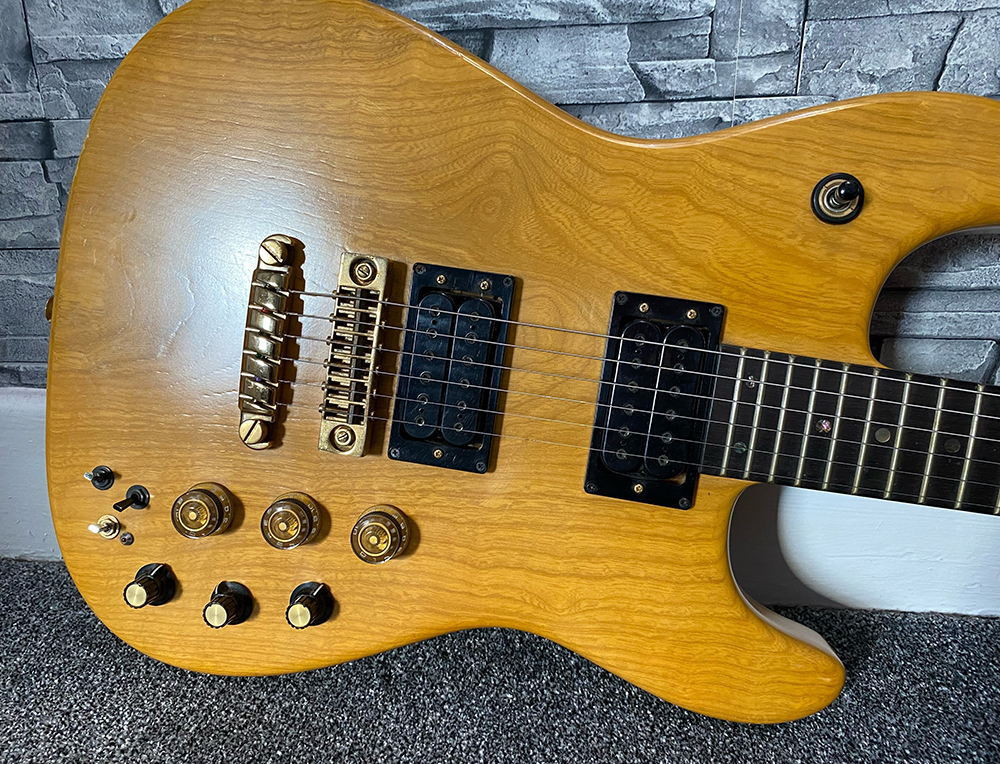
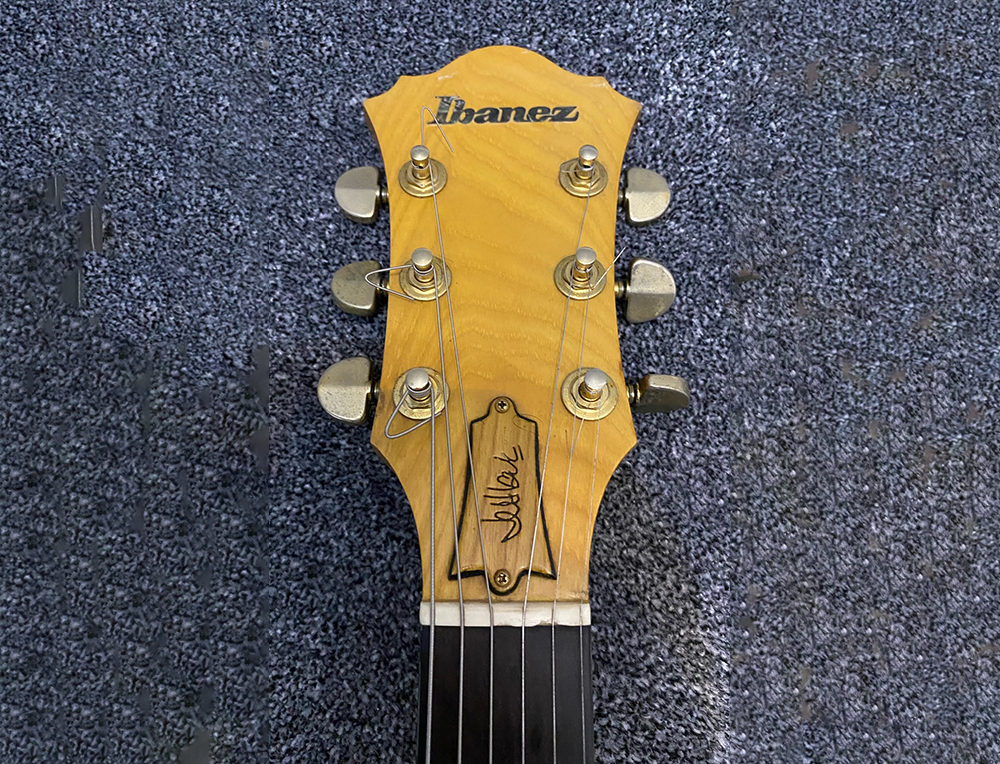

As it turns out, John McLaughlin – and his Rex Bogue-made custom guitar – proved to be influential in the design process. Beck singled out the jazz virtuoso in these early discussions, and that Rex Bogue flair can be seen in the final prototype, specifically in the finish and headstock shape.
Though Beck’s ideas were far from formed, the meeting proved to be fruitful. As Tanaka recalls, “Jeff had a sketch of what he wanted for his signature model from Ibanez”.
“The sketch was a slightly more elegant Strat,” Hasselberger adds of the drawing, which Beck himself drew in Jeff’s notebook. “The guitar that was built for him started with that sketch. I forwarded that sketch to Fritz Katoh in Japan and he took it from there.”
The signature guitar that never was
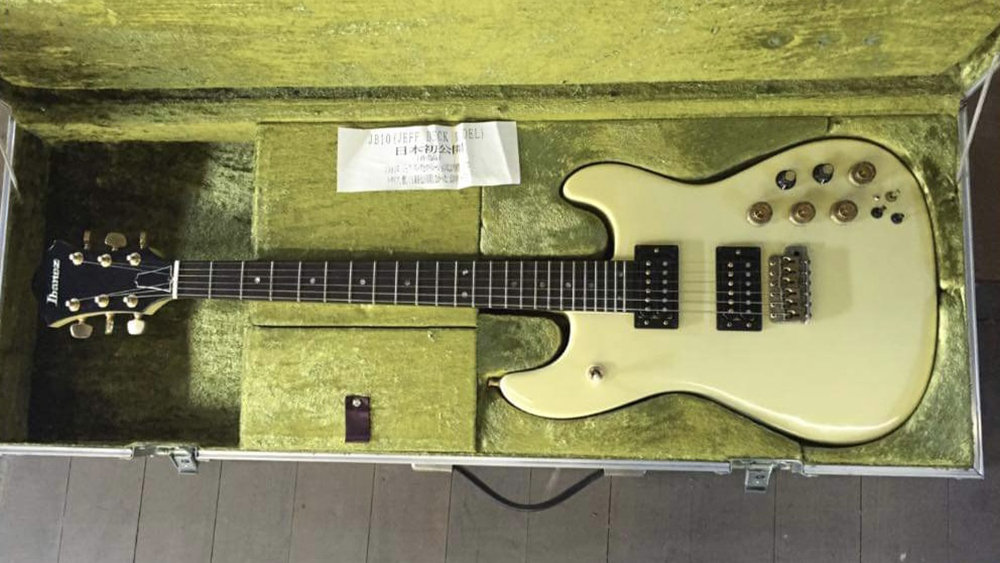
When Fritz Katoh – the man who actually built the guitar in Japan – received the sketch (a sketch we've been informed still survives today), plans were set in motion to construct Beck his desired signature model, and so began a prompt process of prototype assembly.
Chris Kelly, Head of the Ibanez Custom Shop and Artist Relations Program at the time, was part of the inner circle of individuals working to bring Beck's ideas to life. And, as per his recollection, Beck was after a very particular hybrid style instrument that combined two distinct models.
“We started working with Jeff early '80s,” Kelly says. “I had met him through my dear friend B.B. King years earlier and developed a relationship. Jeff was looking for some sort of hybrid Les Paul/Telecaster type guitar. He was interested in the large neck [and] Dunlop 6100 frets.”
The results of these discussions were the models you see pictured in this article. Images of two have surfaced, and one – the example now owned by Hodgson – has been unearthed.
Though arriving with slightly different spec sheets, the desired Les Paul inspiration can be seen in the dual-humbucker setup, and Beck's affinity for the Strat is evident from the body shape.
However, the most puzzling spec is the control circuit: there are many, many parameters and switches present, and this seemingly goes against Beck's famed less-is-more approach to playing and gear. Indeed, as we'll explain, this was but one of the reasons why Beck never truly warmed to his Ibanez creation.
Tanaka, who was there for the first consultation, helped personally deliver these prototypes to Beck's house: “During the process of contract negotiation for his model, we made several samples which I went with to show to his house in England twice.”


Despite these back and forths – and approximately “four or five” prototype models that sought to iron out the kinks in the design – Beck and Ibanez never formalized their partnership.
As per Kelly’s recollection, this particular prototype proved to be “a little bulky and heavy” – something he was evidently trying to move away from – and subsequent models merely solidified the growing suspicion that Beck and Ibanez were unfortunately just two incompatible parties.
“We just couldn’t come to terms on a deal with him, because he really was more of a Fender type of a guy,” Kelly explains when asked why the model never came to fruition. “He wanted more of a seven-inch radius, and had kind of a different idea of what he wanted.”
Though Ibanez would attempt to sway him with “more of an RG-type guitar”, as opposed to the Strat/Les Paul hybrid that had been envisaged, Beck refused to compromise, and remained steadfast in his search for a signature that would meet his every demand.
Plus, owing to the wealth of onboard controls – which contrasted with the models he’d grown fond of – Beck never seemed to come to terms with the overwhelming nature of the model itself. In fact, according to Lance Miles – a tour tech who worked closely with Beck throughout the ‘70s and ‘80s – the guitar itself “wasn’t clean enough”.
It didn’t tick his boxes. It didn’t give him what he wanted
Lance Miles
“I think it was too complicated,” observes Miles, who once came across the guitar in storage while helping clean out Beck’s home in England during the ‘90s. “Jeff was a very simple, pick-up-a-guitar-and-play-it [type of player]. I think that’s probably the reason why he just went, ‘No.’ I think they [Ibanez] put the electronics in so that people could emulate the things that Jeff did, and he didn’t need that.
“I didn’t expect anything to come out on the market because Jeff wasn’t happy with it,” he goes on. “It didn’t tick his boxes. It didn’t give him what he wanted. It wasn’t clean enough, and Jeff was very particular in that way.”
The inability to see eye-to-eye on these essential specs meant that Ibanez and Jeff had no other option but to shake hands and part ways.
“In the end, we decided that we’d given it our best shot, and I thanked him for all of his time and effort,” Kelly says. “He was a very gracious guy. I did try to build him a guitar a little later out of the Ibanez custom shop in Burbank, but it just wasn’t a good fit for him.”
The Ibanez experiment was over and the prototypes had slipped into obscurity, but Beck’s quest for a signature guitar was just beginning – and, just as Kelly had anticipated, there was only one brand Beck could turn to in order to make his desired design a reality.
A future with Fender
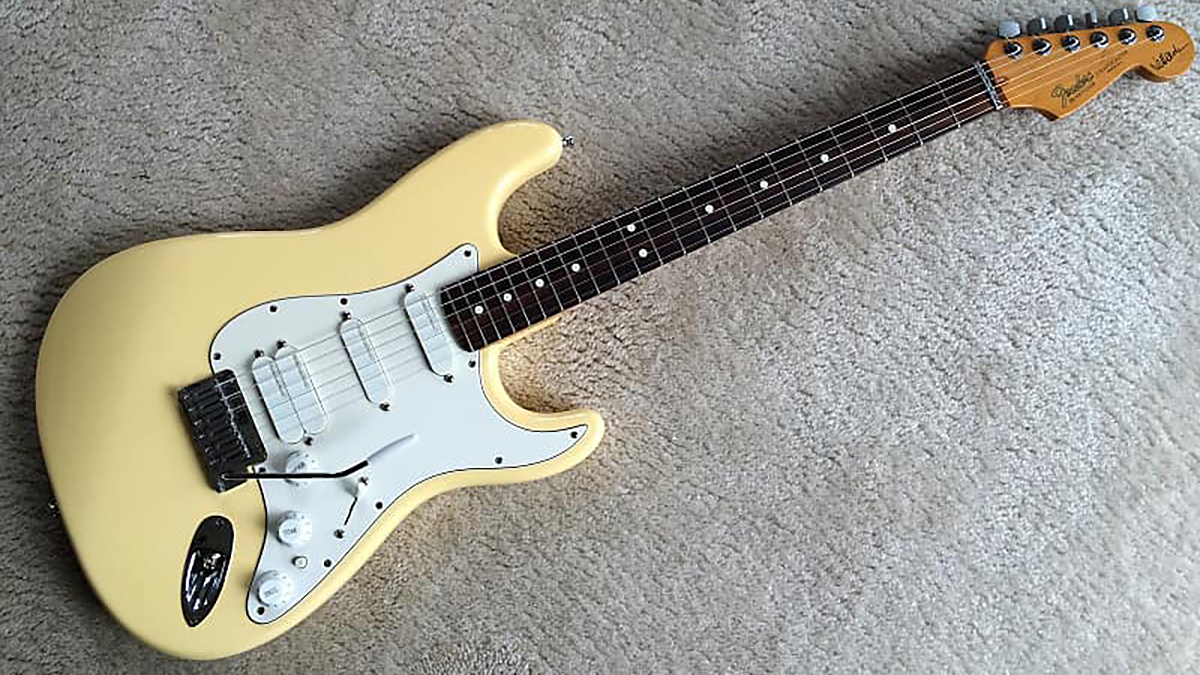
While Beck and Ibanez worked on what would be an entirely new electric guitar template, Fender waited in the wings. “He was also being courted by Fender,” Kelly concedes, “who were able to make him the Jeff Beck model as you know.”
The Fender Jeff Beck model gave the guitarist everything he was looking for, including a thick U-shaped neck – which became known as the “baseball bat neck” – and a bridge humbucker that perhaps tapped into the Les Paul inspiration.
Despite the eventual release of the Jeff Beck signature model in 1991, it wasn’t all plain sailing between the two parties. In ’86, shortly after the Ibanez project was abandoned, Fender recruited founding Custom Shop luthier George Blanda to create something in line with what Beck wanted from a signature guitar.
Again, a chunky neck was top of the pecking order – “Jeff’s main request was for a really huge neck,” Blanda once told Xhefri Guitars – as was a now-famous Graffiti Yellow finish.
That guitar (a tweaked ‘62 reissue) was later retooled into a potential signature model, though it was ultimately rejected by Beck. Despite the setback, the two parties later rekindled their relationship to produce the aforementioned flagship Beck signature guitar.
This partnership with Fender finally put an end to Beck’s hunt for his ideal signature model, formally relegating the quirky Ibanez prototype to the annals of six-string history. Yet these guitars do exist, and they’re still out there. They offer a unique insight into an elusive model that, if things had played out differently, could have become a household guitar name.
“It’s great to own such a rare piece of guitar history,” Hodgson, who received his own Beck Ibanez through an industry contract, tells Guitar World. “Jeff Beck was the greatest guitar player of all time, so to own a guitar that Jeff had in his own music room is fantastic.”

Matt is the GuitarWorld.com News Editor. He has a Masters in the guitar, a degree in history, and has spent the last 16 years playing everything from blues and jazz to indie and pop. When he’s not combining his passion for writing and music during his day job, Matt records for a number of UK-based bands and songwriters as a session musician.
“It holds its own purely as a playable guitar. It’s really cool for the traveling musician – you can bring it on a flight and it fits beneath the seat”: Why Steve Stevens put his name to a foldable guitar
“Finely tuned instruments with effortless playability and one of the best vibratos there is”: PRS Standard 24 Satin and S2 Standard 24 Satin review









